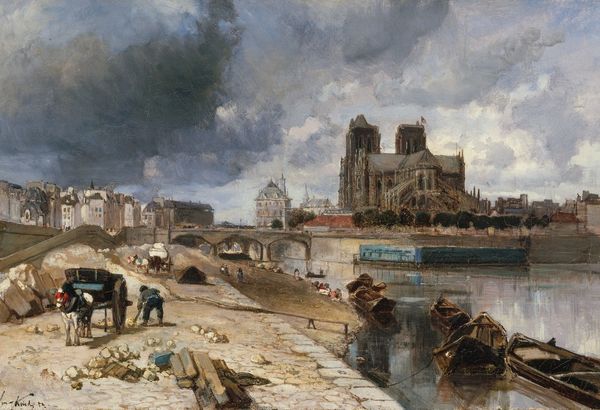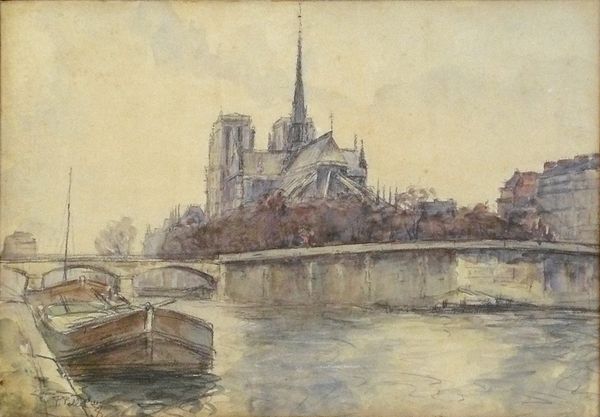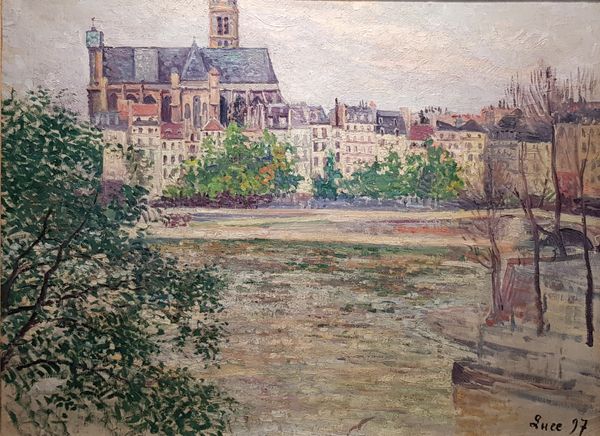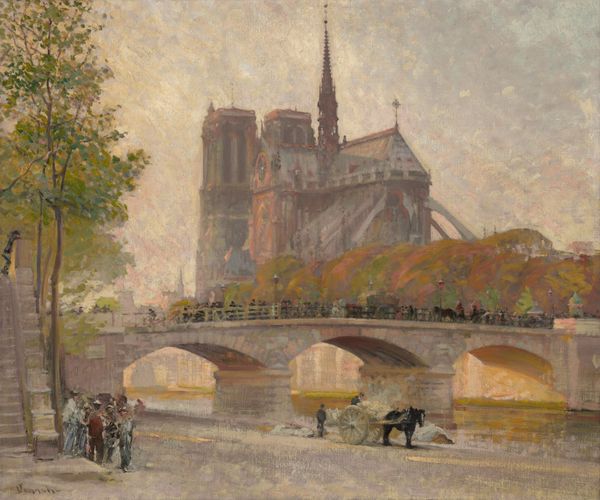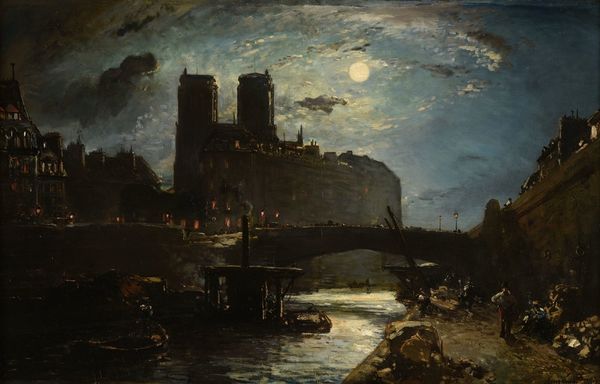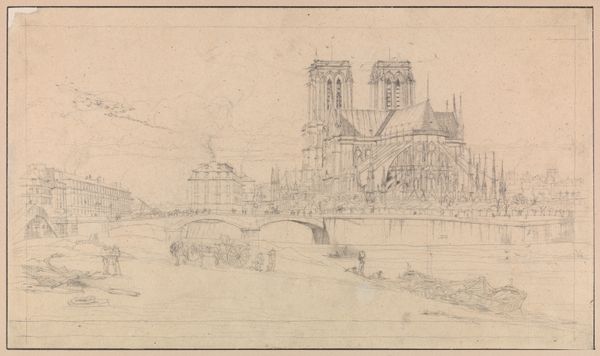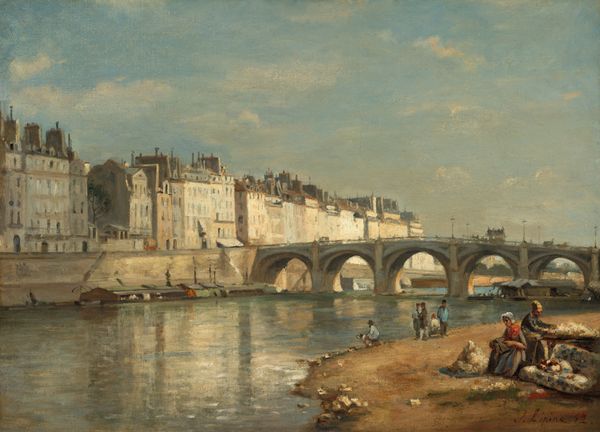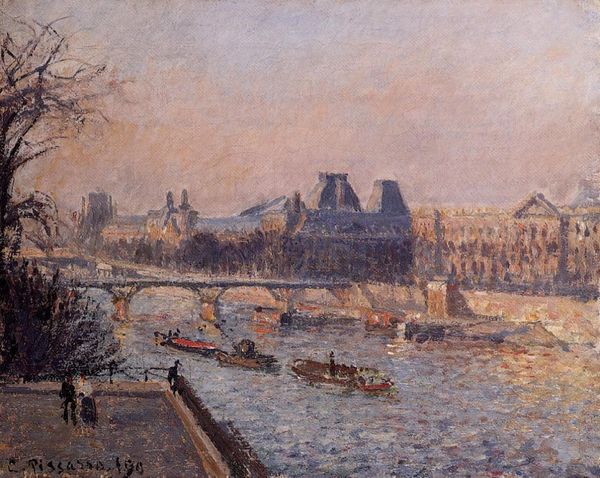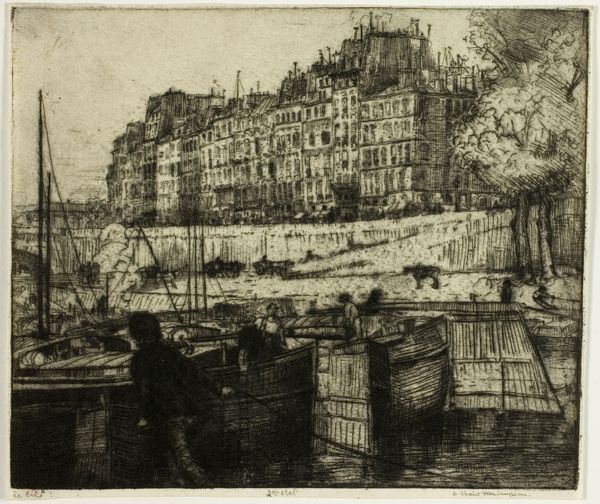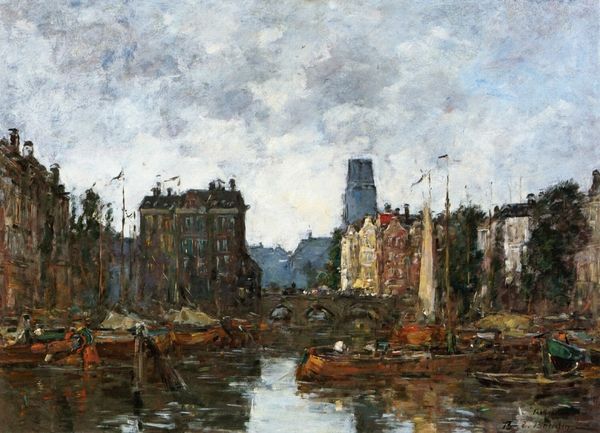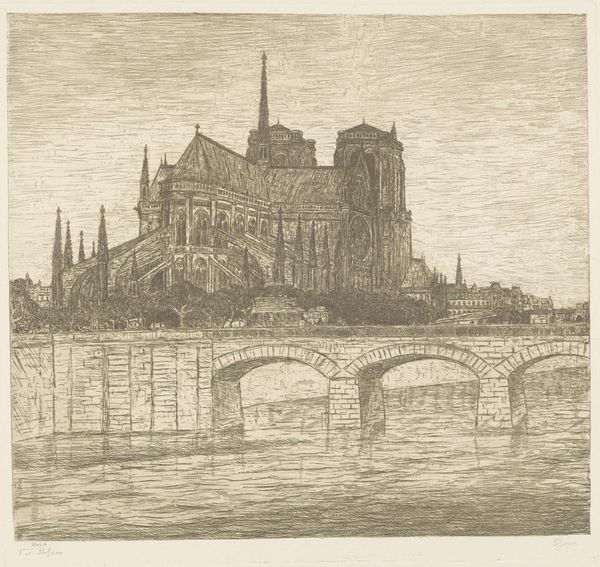
Dimensions: 27 x 40 cm
Copyright: Public domain
Curator: What a beautifully subdued cityscape. There's something quite serene about Jongkind's "Notre-Dame de Paris." Editor: Serene, yes, but there’s also an inherent sense of something somber. The subdued greys and blues…it's almost like looking at a memory fading at the edges. Curator: That melancholic tone may well speak to Paris’s complex relationship with its monuments and, of course, religion itself. This work, dating from 1854, captures not only the imposing architecture but also the lived urban experience. How these public structures were enmeshed with the quotidian. Editor: It does, and note how Jongkind, with a limited palette, conveys so much information. The reflection in the Seine is captivating, and how the cathedral, rather than radiating light, absorbs it. It’s as if the weight of history is palpable here. It communicates how cultural icons can act as a collective anchor across generations. Curator: Exactly. The painting encapsulates the socio-political landscape too. Consider how in the mid-19th century, France experienced massive urban transformations under Napoleon III. This particular view—from the quai—highlights the dynamic between old Parisian identity and the modernizing metropolis. Editor: Absolutely, I sense the pre-impressionist sensibility that will inform a generation, focusing on rendering fleeting light effects over sharp detail. But those gothic towers... they preside like silent witnesses, absorbing everything. It acts as a visual metaphor. Notre Dame wasn't just a religious building, but an emblem of collective identity, and almost the spirit of Paris itself. Curator: I find it telling that the artist emphasizes the city’s river. The Seine was integral to Paris's industrial and cultural life and this perspective ties architecture, commerce, and transportation together. It grounds the monumental Notre Dame within the practical realities of the city's function. Editor: And by depicting people strolling by the riverbank and using the bridge, it speaks of continuity, daily rituals unfolding against this dramatic backdrop. As if history itself is present with the monument in the scene. This moment offers not just the artist's feelings, but also echoes collective emotions—reverence and possibly unease facing cultural weight. Curator: A nuanced portrait, and far more politically aware than some might first realize! Editor: I agree! It provides enduring insights.
Comments
No comments
Be the first to comment and join the conversation on the ultimate creative platform.
